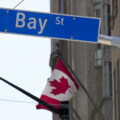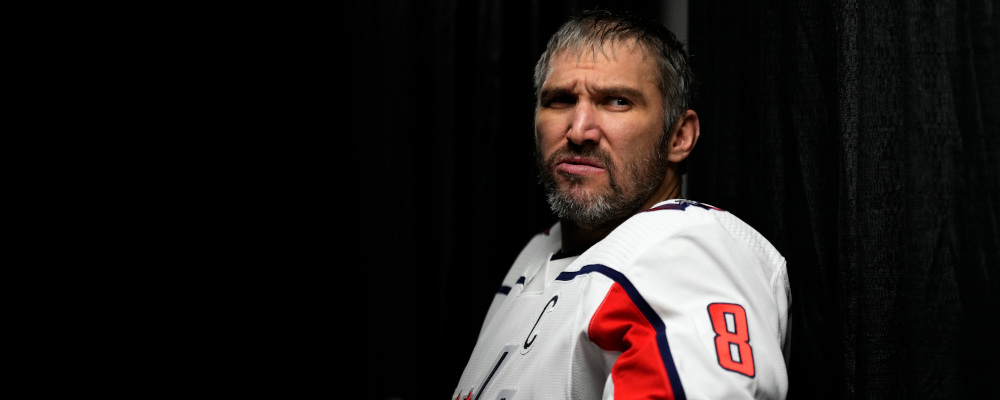The NHL has concluded its All-Star festivities, marking the start of the season’s home stretch and the eve of interminable jokes about the Maple Leafs’ playoff struggles. While Toronto’s woes are the closest Canada has to a Homeric epic, the league is valiantly fighting its own mighty battle against fun and taste.
Viewership is down for a variety of reasons I won’t bore you with, but those still tuning in are increasingly cognisant of the fact that the NHL’s greatest priority is to remind fans that Canadian Tire and Nestle are still extant. The continued use of aggressive digital board ads has annoyed everyone aside from the supposed silent majority commissioner Gary Bettman insists take no umbrage; players and pucks vanish in them, their sudden movements distract from the play, and they’re apparently a threat to the epileptic.
It’s arguably ridiculous to pine for the good old days of advertising, but it could be charming to see what local businesses popped up on the boards as you followed your team through a road trip. Now every rink feels like an identical construct that exists to badger you about Tim Hortons, and I’ll have fewer opportunities to warn outsiders that Pizza 73 tastes like cardboard and regret.
If you aren’t too distracted by the overactive digital boards sucking pucks and players into the shadow realm, you’ll probably notice that more and more of the latter are sporting advertisements on their helmets and jerseys. They haven’t yet become the moving billboards of European hockey, but they’re still vandalizing beauty. The Hockey Sweater loses much of its impact if you imagine its sacred jerseys shilling RBC at the reader.
Hockey is a business, and the NHL would make players pull the Stanley Cup out of a Subway bag if they thought viewers would tolerate it. The league will keep profiting, and Canadians will keep watching, if only because we need to keep believing that our continued march toward liver failure will eventually be justified with a championship. There was probably a cadre of fans who complained that the introduction of the forward pass ruined the game they knew and loved, yet the sport survived. But then there’s Alexander Ovechkin, who the league continues to fête for toppling Gordie Howe as the number two goalscorer in history.
Ovechkin is both one of the greatest hockey players ever and a long-time chum of Vladimir Putin, and the NHL’s handling of this dichotomy has passed beyond annoyance and into moral cowardice. When Russia seized Crimea and the Donbas in 2014, Ovechkin dutifully posed on Instagram with a sign stating “#SaveChildrenFromFascism,” the pathetic propaganda line the Kremlin trotted out to justify their revanchist land grab. In 2017, Ovechkin led the charge on a social media campaign to pump Putin’s tires before his 2018 re-coronation.
Whenever Ovechkin is asked about this, he insists he’s an apolitical athlete (presumably he hoped to save children from naturally occurring fascism). He’s made mealymouthed calls for peace, but has also reiterated his support for Putin. A smiling picture of the pair still adorns his Instagram profile. It’s true that it would be difficult for Ovechkin to disengage himself from Putin’s machine. It’s also true that other Russian celebrities, like singer Alla Pugacheva, have made the painful decision to protest the war while using their financial resources to insulate themselves from the fallout of their stance.

Ovechkin is just another man who will have to live with the consequences of his poor opinions, but it’s cowardly for the NHL to continue celebrating him. Treat him like any other player, sure, but don’t produce cutesy bobbleheads, market videos of his son at the all-star game, profit from overpriced photos of his historic goal, and make him the star of a high-profile outdoor game. Ovechkin may have scored more than Howe, but only one of them helped slander Ukraine as a country full of Nazis in need of rescue via murderous artillery bombardment.
The NHL’s politics have always been those of convenience. This is the same league that continued to trot out Bobby Hull, who recently passed into the arms of the Lord so that Hull could try taking a swing at Him too, whenever the chronic domestic abuser could be crammed into a photo-op. But it’s disingenuous to pretend that hockey is apolitical after a Ukrainian team did a fundraising tour of Canada. We all know why they visited, and it wasn’t because they needed new skates.
Don Cherry emerged from the cave to which he’d been banished to speak in Ovechkin’s defence, arguing that his critics “don’t care about hockey.” But you have to love hockey to sit through its obnoxious commercials every night. Right now, however, it’s hard to love a league that looks at a Putin apologist and just sees more dollar signs.
Recommended for You

Falice Chin: The ‘wild and weird’ Calgary Stampede

Canada is losing ground on investment. Here’s where

‘There can be massive policy investments made in AI literacy’: Five takeaways from John Stackhouse, Janice Gross Stein, and Jaxson Khan on the race for AI adoption in Canada

‘A celebration of the spirit of Alberta’: Ryan Hastman on the political, economic, and cultural importance of the Calgary Stampede



